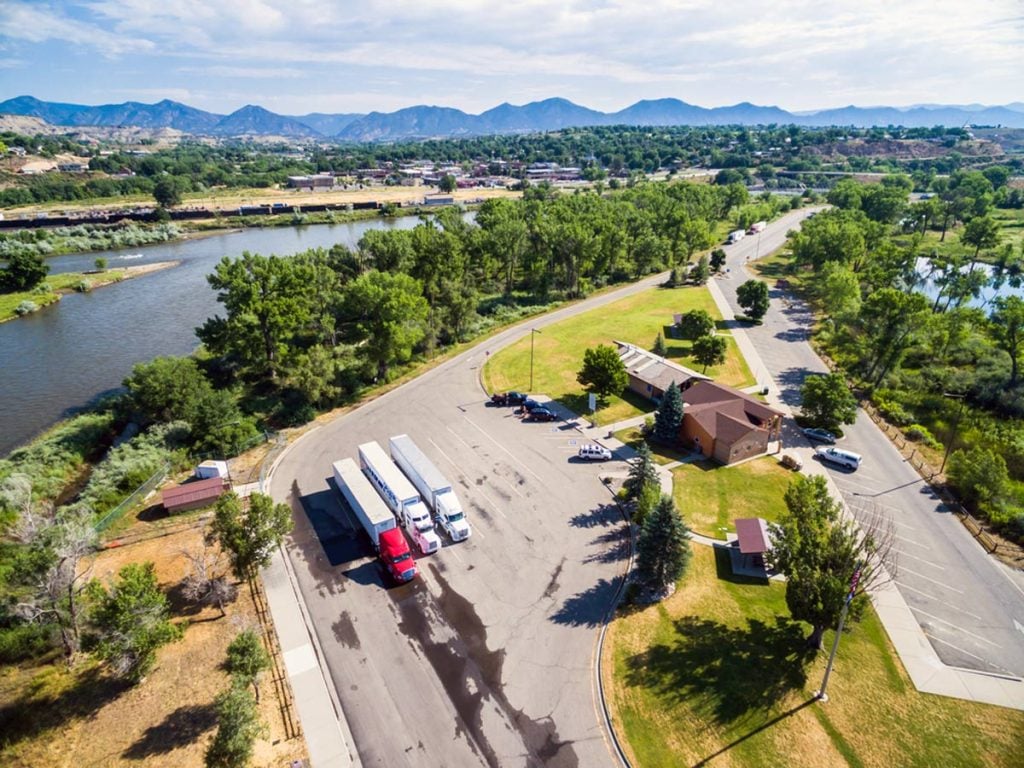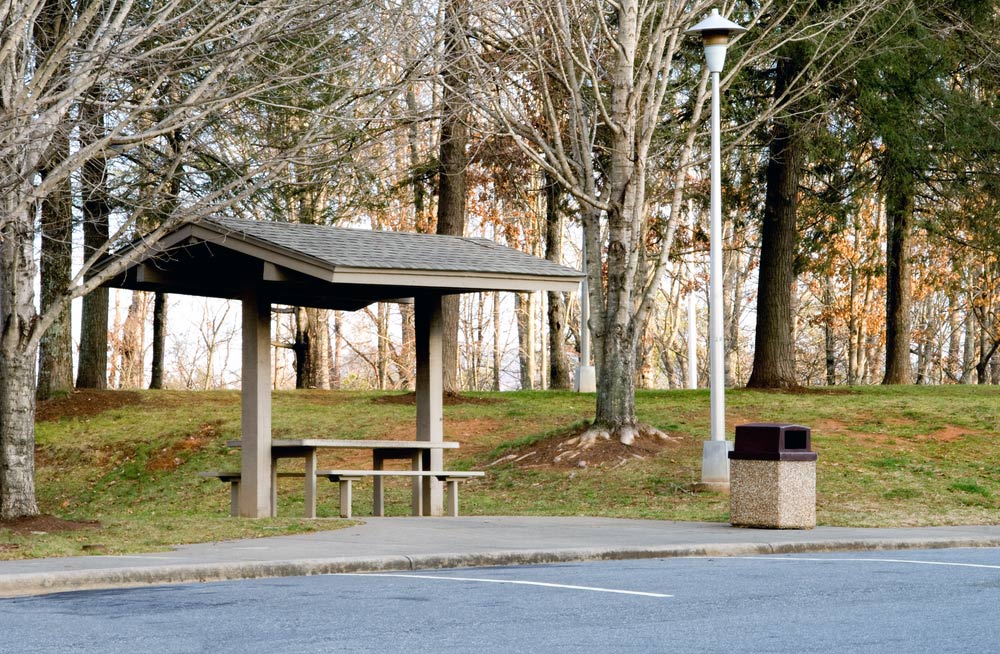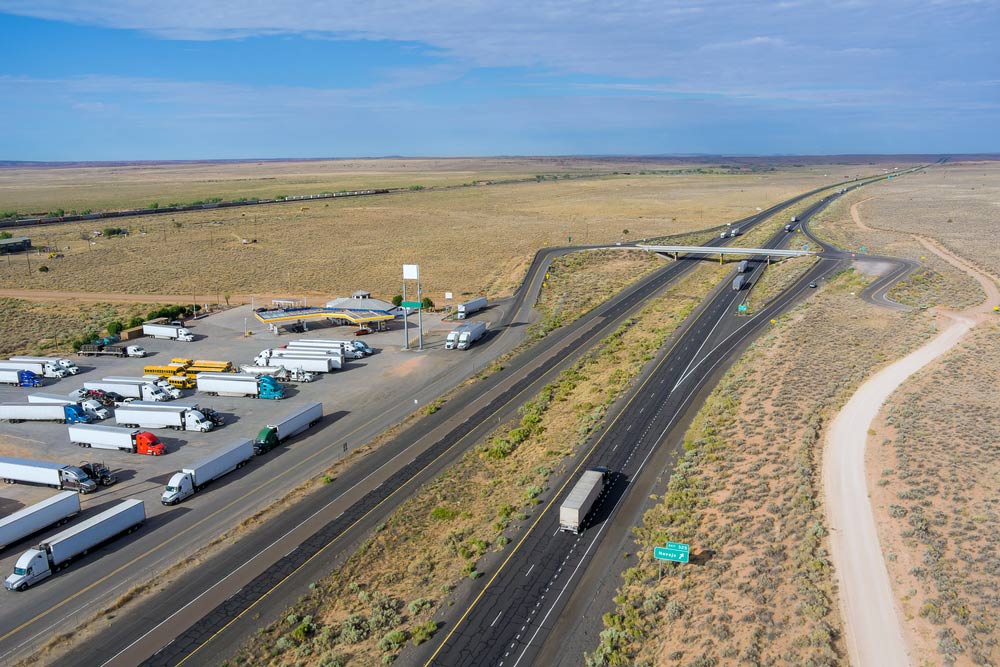Can You Sleep At Rest Stops?
The short answer is ‘YES’ – you can sleep at rest stops. You can choose to sleep in your car in the rest area. However, the devil is quite frankly in how long you are allowed to sleep. In some states, it is a nap; in others, you can get a good night’s sleep.
Some states have times-of-day limits, but with others, there are no limits. Then there are also states that don’t permit overnight parking.
Since all these areas are open 24/7, you can drive into a rest area at night and then stay there until you think it’s possible to start driving again. The beauty of rest stops is that unlike overnight RV camping–rest stops are free.
Confused yet? Read on! In this article we will cover the ins and outs of sleeping at a rest stop in each state.

Do States Allow Drivers to Sleep in Their Cars?
No federal law says drivers can or cannot sleep in their cars. That’s why it is up to each state to enact its own laws regarding rest stops. Generally, all states allow people to sleep in their vehicles in a rest area, but no state explicitly permits it.
States generally agree that the rest area is intended for drivers to rest and thus prevent accidents caused by “driver-related fatigue.” States prefer that drivers take advantage of the rest areas to take some time to recover and then resume driving.
But a handful of states limit drivers to just two hours of rest, while others may allow drivers to hang around for twenty-four hours. Half of states have no time limits. We’ll go into these a little later, but suffice to say that depending on where you are, it is possible to stay overnight.
Rest Areas In The US Are Open 24/7
Anyone who has done a bit of interstate driving in the US knows that rest areas are open at all times from South Dakota to New York State. Regardless of the time of day or year, the rest area is open, meaning that drivers are within their rights to enter these areas and spend some time, as state law allows.
Usually, with a few exceptions, drivers can remain there till morning.
It often means drivers are permitted to park their vehicles overnight. But as mentioned earlier, some states have a time limit; this time limit is often just a few hours. This means that drivers may get barely more sleep than a short nap.
Also, these shouldn’t be considered free camping spots or used in that manner.
While the law in these states cap parking duration at 2-3 hours, we’ve not heard of incidences where law enforcement has asked drivers to leave the area. If you are there trying to sleep, it’s unlikely you will need to leave. However, you might run into trouble with law enforcement if you’ve been there too long and are having fun instead of resting.

Is There A Difference Between Overnight Parking And Camping?
Camping is where many states have an issue. Camping is a term used to describe a recreational activity, whereas parking overnight is meant to get some rest so you can drive safely. In other words, one is optional, and the other is mandatory.
State law enforcement does not mind sleepy drivers catching a few hours of sleep in interstate rest areas because that’s what the rest area is meant to offer. However, they don’t want people coming to these areas to set up camp and have fun.
So, while this is confusing, adding another layer of confusion is that many rest areas have small recreational facilities like cooking grills, picnic tables, pet exercise areas, children’s play areas, viewing areas, hiking trails, fishing decks and even art.
While state laws may appear to discourage people from hanging around in rest areas just because they want to have fun, they are, on the other hand encouraging visitors with these facilities. After all, would a sleepy driver want to go fishing or hiking?
Usually, states will draw this fine line as the sun goes down, which means they don’t want you to continue engaging in those activities through the night. They also don’t want people camping in tents, sleeping rough, or burning campfires or even making noises into the wee hours of the morning. They want people to leave as soon as it gets dark.
How Not To Get Into Trouble At An Overnight Rest Area?
Based on what we already know, the best way to park in an overnight rest area without attracting attention from law enforcement is to act tired. In fact, act like you’re too tired to drive safely, and all you want to do is sleep.
Then spend most of your time inside the car, and close your eyes, so as long as you stay quiet and in the vehicle, law enforcement isn’t going to ask you to leave. This is true for all states, regardless of how long you park.
If you are towing an RV, you’d want to stay in the rig. While you may be tempted to roll out your awning, setting up your camping gear is a red flag. And so is playing music and watching television. You will want to keep the lights in your camper off, or at least dim, and roll down the shades.
Not drawing attention to yourself is the key to staying at a rest stop for the longest time possible. Law enforcement will not kick you out for staying in the area for long if you stay quiet. Plus they allow overnight parking so it will not cost you anything.

How Are Comfort And Rest Defined?
According to the US Department of Transportation Federal Highway Administration, it is a safe facility for vehicles to be parked and motorists to rest in comfort. But that’s not how all states may deem what is necessary for a motorist to rest.
Usually, the time you need to spend in these areas will vary depending on your state, as we mentioned earlier. Some states may allow you to sleep in these rest areas without major disturbance.
In some states, the highway patrol may knock on your door and then force you to leave if they have noticed that you have parked for a long time. However, this rarely happens if all a person does is sleep.
That’s why it is worth having a working understanding of how much time you’re allowed to spend in each state’s rest area. Fortunately, you can plan and map this out before you leave for your destination.
Time Limits of Parking At Rest Areas Broken Down By State
Since the time limits of how much time you can spend in the state vary, you will want to know what is legally allowed. States that don’t have time limits are ones you don’t have to worry about, so we’ll leave them out of the discussion.
However, you can’t pull out your furniture and camp over the weekend in these lenient states. Overnight parking at rest areas is still limited to only those who want to rest.
Below are a couple of examples of states where there are time limits.
Alabama
According to the Alabama Department of Transportation, there is no parking rule for rest areas in the state. This means that drivers can stay for as long as they need to. The state has a new tree identification program within each of its rest stops.
Alaska
In Alaska, drivers can’t park or camp their vehicles for longer than posted times. Since the rest areas in Alaska are few and far between, with lots of isolated stretches, most drivers will pull off the highway and park. So, the rest area time limits don’t matter.
Arizona
The state’s transportation department has a website that outlines all the rules for each of its rest areas. There are also spots marked on the map, identifying all rest areas and facilities available.
Arkansas
The state allows drivers to park overnight, but it is for safety reasons. Since driving when sleepy is not safe, drivers can park and sleep for as long as they need to before getting back on the road.
California
Rest areas in California allow drivers to stay in the area for eight out of every 24 hours. In other words, eight hours a day. The Department of Transportation states that safety is a big part of its commitment to citizens. That’s why travellers are provided with a safe, comfortable, clean area.
California’s rest areas are attractive and useful, encouraging travelers to easily use the safe location to take a break and later return when they can drive without dozing off.
Delaware
The state has one on I-95, and there is unlimited time that drivers can spend resting. Then there is the other on Route 13; here, drivers are limited to eight hours if they have an RV. However, we’ve never heard of people being asked to leave once their eight hours were up.
Florida
The FDOT does not permit overnight camping, but visitors can stay there for three hours. Any time beyond three hours is not allowed unless the person is sleeping.
Idaho
Idaho allows interstate drivers to stay in rest areas for up to ten hours. Highways drivers can spend up to sixteen hours in rest areas.
Kansas
RVers are treated to a set of special rest areas in the state. In these special areas, not only can they stay for a total of 24 hours, but they also have an RV-specific loop.
Mississippi
According to the Mississippi Department of Transpiration’s guidelines, readily available on their website, long-term parking in their rest areas isn’t permitted. Long-term is defined as eight hours continuously, regardless of if the vehicle is occupied.
The state reserves the right to remove the vehicle if it is parked for longer than this period. Usually, the MDOT forces will alert the vehicle owner before removing it.
Oregon
Oregon has set out very clear rules for the area. It is one of the few states that defines tents, camping structures, and the duration you’re allowed to remain in the rest area. The rules state that drivers can’t stay in the rest area for no more than 12 hours every 24 hours. In other words, it’s 12 hours a day.
Pennsylvania
Pennsylvania has confusing rules for how long drivers can stay in the rest area. The state only allows drivers to stay in the area for two hours. However, drivers can spend 24 hours at the service plaza around the Turnpike.
Keeping Yourself Safe At Rest Areas
Now for anyone that needs to drive for several hours, rest areas can quite literally save their lives. Not only do they provide a safe spot to rest, eat, and use the restroom, but also nap if needed. However, every commuter should think about safety during these rest stops. It would help if you were prepared and alert.
Here are a few tips to keep yourself safe:
- Sleep in your regular clothes. In other words, don’t change into a night suite because that will make a quick departure if needed, harder.
- If possible, travel with your dog. Not only do they make good travel companions, but they can alert you of potential danger when sleeping.
- Ensure your mobile device is charged.
- Make sure to look around before getting out of your RV.
- You will want to be careful of suspicious activity. If you see something making you feel uncomfortable or that’s out of the ordinary, it would be a good idea to get in the vehicle and drive away.
- You will want to stay at a rest stop overnight so you don’t succumb to the effects of sleep deprivation.
- Make a note of the name of the rest area and the nearest mile marker. This is important to know if you ever get into an emergency.
Final Word
As you now probably know, how long you can stay at a rest stop will vary depending on which state you are traveling in. However, it is always a good idea to plan your trip ahead, including where to stop and for how long. We hope this article will make interstate travel much easier for you.

This Post Has 0 Comments